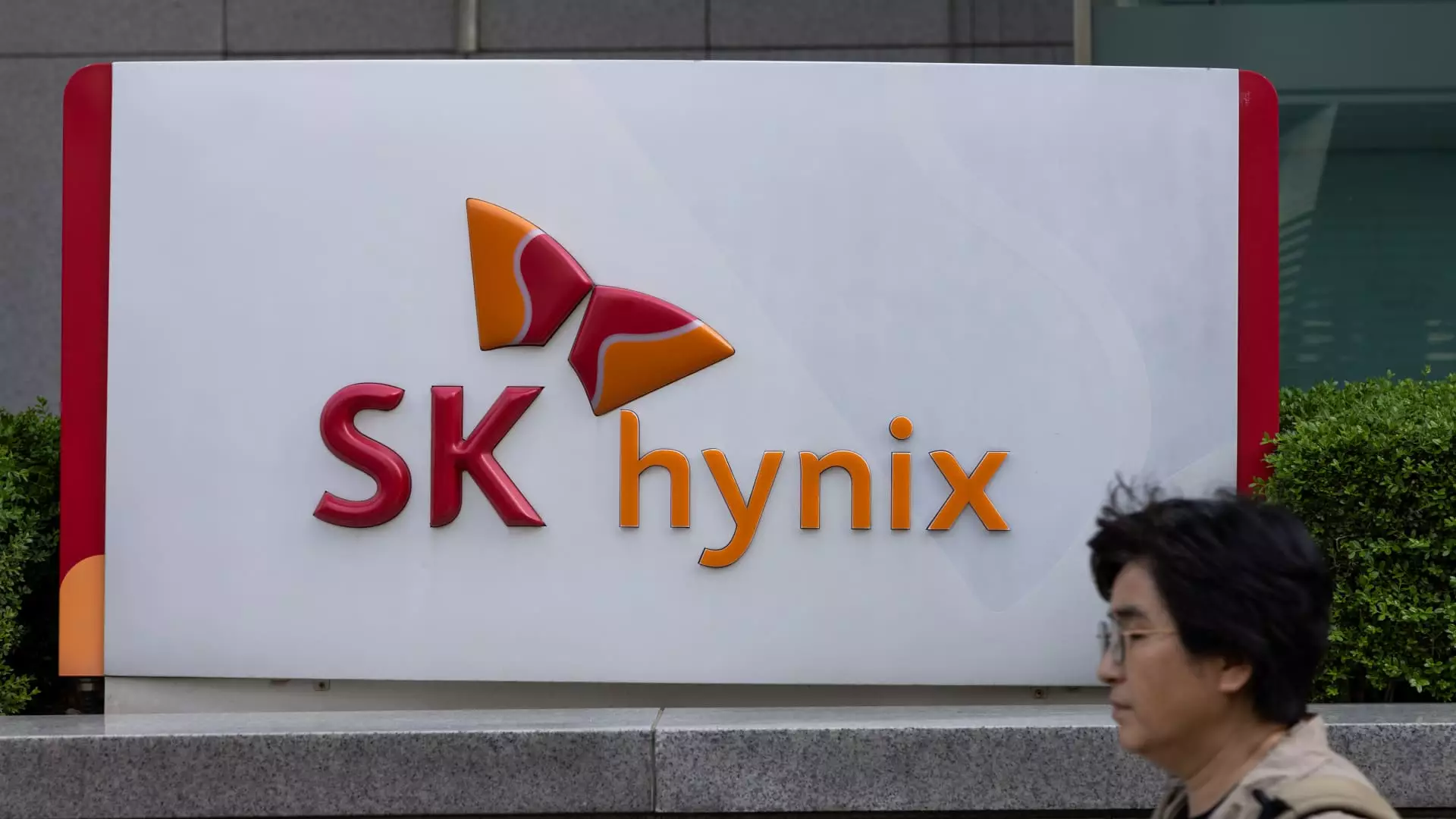SK Hynix, a prominent player in the global memory chip market, recently announced astonishing financial results for the fourth quarter of the year. Reflecting a robust demand for high-bandwidth memory (HBM) utilized significantly within generative artificial intelligence (AI) applications, the company experienced a remarkable 75% surge in revenue compared to the same quarter last year. Notably, the revenue hit 19.77 trillion won ($13.7 billion), closely edging past analyst expectations. Its operating profit reached an extraordinary 8.08 trillion won ($5.6 billion), marking a staggering 2,236% increase year-on-year. These figures not only highlight SK Hynix’s operational prowess but also its integral role in an industry heavily influenced by AI advancements.
Despite the impressive financial results, SK Hynix’s share prices slipped by 2.7% following the earnings announcement. The chief financial officer, Kim Woohyun, provided cautionary commentary regarding the near-term outlook. He emphasized uncertainties surrounding memory demand for 2025, stemming from inventory adjustments within the PC and smartphone segments. Moreover, he alluded to the ramifications of stringent trade policies and ongoing geopolitical tensions that could shape the semiconductor landscape.
The reflection on potential headwinds offers a reality check for stakeholders, demonstrating that even in scenarios of growth, the sector remains vulnerable to external fluctuations. The previously unblemished trajectory of SK Hynix may face turbulence due to these looming uncertainties, which could impede steady revenue streams and profit margins.
The milestone achievements of SK Hynix are significantly propelled by the growing demand for AI infrastructures. The company’s role as a key supplier to heavyweight firms like Nvidia underscores its pivotal position in the evolving tech ecosystem. The robust performance of HBM, a memory type that conserves space while enhancing power efficiency, attests to SK Hynix’s cutting-edge technology and innovation.
As demand for AI memory persists, the company’s strategy of prioritizing profitability over mere volume appears prescient. This directional shift reflects a broader market change where memory manufacturers increasingly focus on bespoke, high-performance solutions rather than traditional commodity-based approaches. The potential for AI-driven applications is vast, suggesting that SK Hynix is well-placed to ride this wave of technological advancement in the forthcoming years.
2025 Forecast: Pessimism or Pragmatism?
Looking ahead, the forecast for SK Hynix remains mixed. There is optimism regarding continued growth in HBM and DRAM product lines, primarily fueled by ongoing investments from technology giants in AI infrastructure. The company’s prediction of a mid to high teen percentage growth in DRAM demand further illustrates their confidence in AI-led markets.
However, the anticipated “slight increase” in capital expenditures for 2025, along with a cautionary stance on demand uncertainty, hints at a nuanced market outlook. This dichotomy suggests a necessity for vigilance in operational strategies, as well as an emphasis on agility in response to shifting market conditions.
Kim Woohyun’s insights during the earnings call illuminate a significant transformation within the memory sector. The movement from a commodity-driven market to one oriented around customization and high-quality products symbolizes an evolution that aligns with broader technological trends. This pivot necessitates not only advanced manufacturing capabilities but also adept responses to fast-shifting consumer preferences.
As AI-infused products begin to penetrate consumer markets for PCs and smartphones, sectors that have traditionally been price-sensitive may soon unveil new opportunities. SK Hynix’s emphasis on high-performance solutions uniquely positions the company to thrive amid such changes, although it must remain wary of possible volatility that accompanies innovations and market shifts.
While SK Hynix celebrates a record-breaking quarter buoyed by AI advancements, it must navigate the complexities of market uncertainties. The delicate interplay between opportunity and caution will define the semiconductor giant’s trajectory in the years to come as it transitions towards a new era within the memory industry.


Leave a Reply